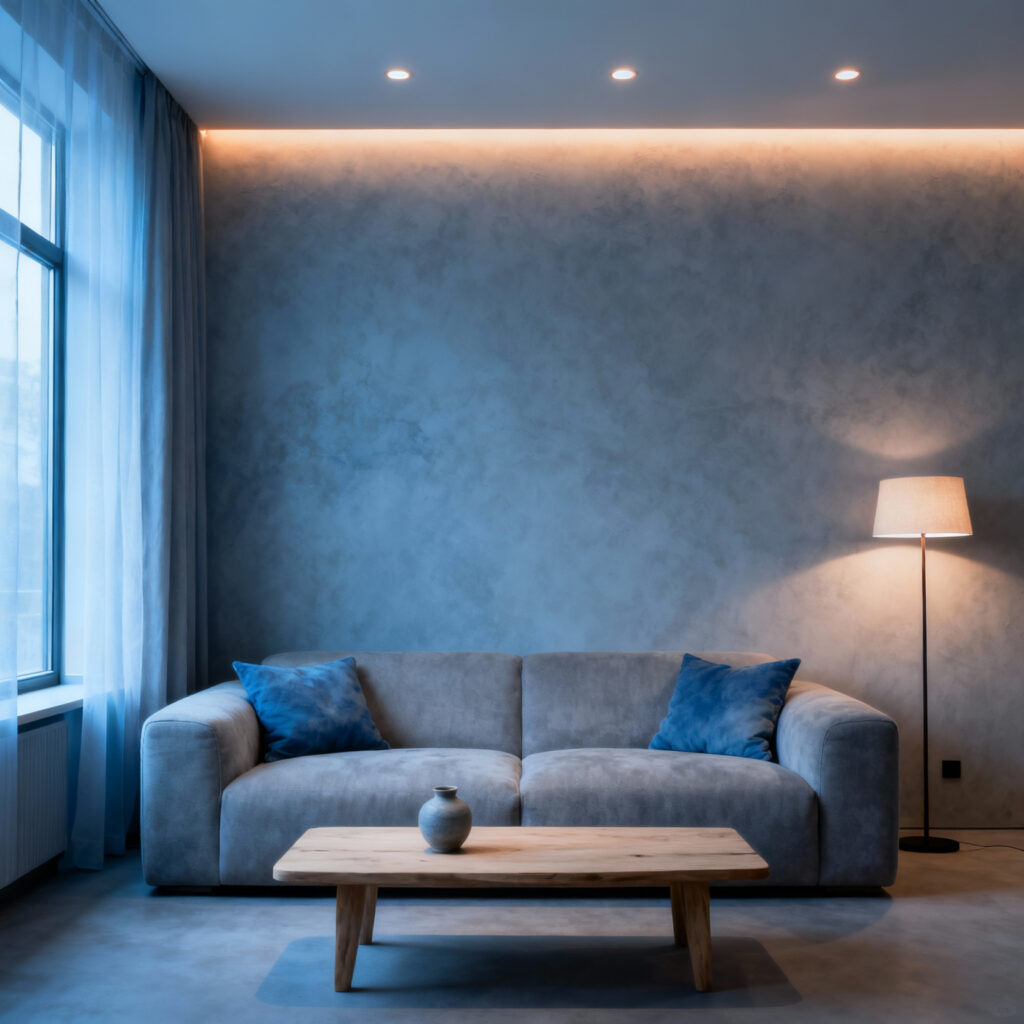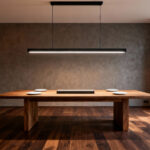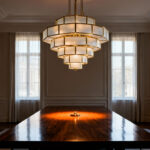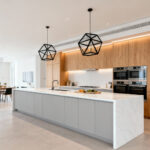Designing your home is, at its heart, an act of self-authorship. Every choice—from the weight of a curtain to the color of a wall—reflects not just a passing preference, but a deeper statement about how you believe life should feel. The most compelling interiors aren’t merely decorated; they are authored. They tell a coherent story about who you are and who you want to become. These 20 principles are about separating spaces that feel truly authentic from those that simply look styled for a photograph.
The living room is the emotional core of the home. It’s the stage for our lives, the canvas where our sense of self is quietly reinforced every single day. We’re going to move beyond the surface-level chatter about trends and dive deep into a framework that addresses both the seen and unseen forces at play in a room. Think of this as a guide to architecting an emotional ecosystem.
We’ll journey through four foundational stages: ‘The Philosophical Anchor,’ which deciphers the emotional and psychological impact of your choices; ‘Material Exploration,’ which teaches you how to tell stories through texture and authenticity; ‘Spatial Application,’ which engineers flow and function; and finally, ‘Lifestyle Integration,’ where we tie it all together to cultivate a space that truly supports your well-being.
Let’s begin.
The Philosophical Anchor: Decoding Emotional Ecology & Colorimetric Harmony (Part 1)
Before we move a single piece of furniture, we have to start here, with an understanding of the invisible architecture of a room: its emotional ecology. This is about decoding how color, light, and sensation quietly shape your experience. This is where we lay the philosophical groundwork for a space that resonates on a deeper level.
1. Calibrating the Emotional Atmosphere with Strategic Color Psychology
To truly transform a space, you must learn to calibrate its emotional atmosphere using color psychology. This isn’t about following simple rules like “blue is calming.” It’s about understanding that every hue carries a specific psychological weight that can either energize or soothe you, spark conversation or encourage quiet reflection. The most intentional living rooms aren’t just colored; they are composed with color to tell a specific emotional story.
Years of working with color theory have taught me that saturation and tone are everything. A muted sage green can create a serene, scholarly retreat, but that same green, when brighter and more saturated, feels energizing and fresh. This is why a blanket statement about a color is so often misleading. Deeper jewel tones—a sapphire, an emerald, an amethyst—don’t just signal luxury; they ground a room with a sense of stability and intellectual depth. The key is to orchestrate these nuances to achieve what I call cognitive resonance, where the feeling of the room aligns perfectly with its intended purpose. It’s about being the author of the atmosphere.
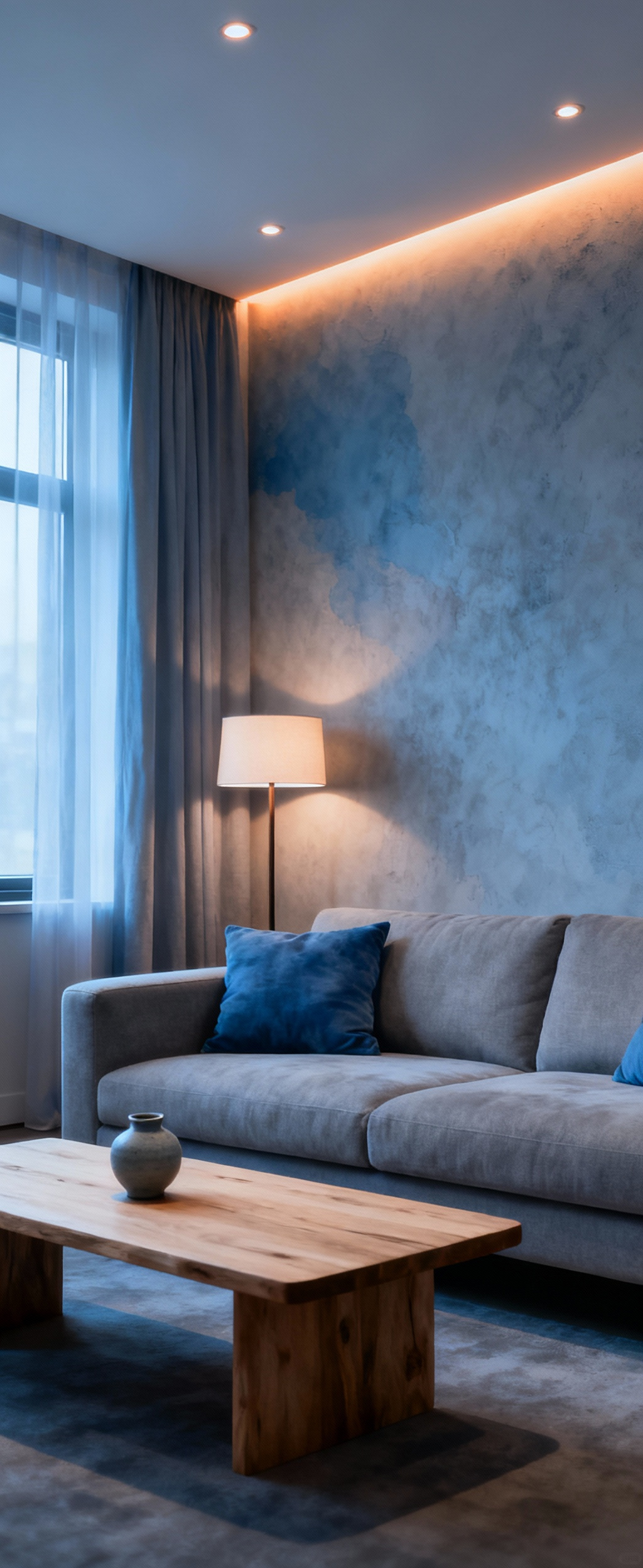
2. Orchestrating Sensory Cohesion for Subconscious Tranquility
This same philosophy extends beyond sight. True tranquility isn’t just seen; it’s felt. Subconscious ease comes from a space where all the senses are in harmony. The most beautifully designed rooms can feel jarring if the acoustics are harsh or the textures are cold. Your mind can only truly rest when there’s no sensory dissonance to process.
Consider the narrative you tell through touch. A minimalist room, visually clean, can feel sterile without a thoughtful mix of textures—the reassuring nubby texture of a boucle throw against the cool smoothness of a marble side table, or the soft give of a deep wool rug underfoot. These moments invite you to connect with the space physically. And what about sound? Hard surfaces bounce noise around, creating a subtle layer of stress. Heavy drapes, upholstered furniture, and even a large piece of canvas art can absorb that ambient harshness, creating an acoustic calm that’s immediately felt, even if you can’t quite name why.
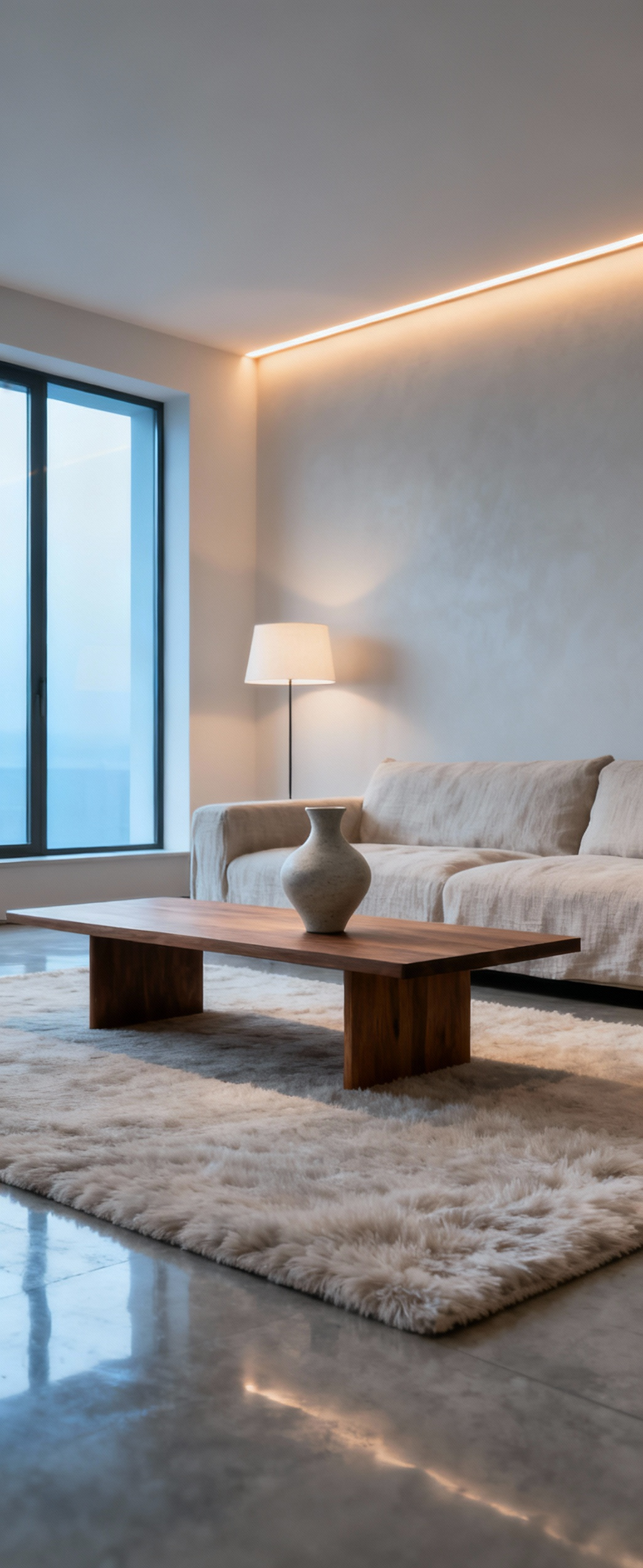
3. Translating Personal Archetypes into Enduring Design Motifs
We move from the senses to the soul. A truly transcendent living room is an external reflection of your inner world, a physical manifestation of your personal mythology. What really gets me is when I see a room that feels like a person. It’s achieved by translating personal archetypes—the core patterns of your personality—into tangible design motifs. This moves you beyond trends and into a timeless expression of self.
Are you the ‘Explorer,’ drawn to artifacts and textiles from faraway places? Your space might tell stories of adventure with global art and raw, natural forms. Or perhaps you’re the ‘Sage,’ who values wisdom and contemplation. That archetype manifests in a room anchored by a personal library, with rich materials like aged leather and dark wood that invite quiet thought. The ‘Creator’ needs a space that fuels expression—abundant light, flexible layouts, and unconventional art. This isn’t about prescriptive rules. It’s about an intuitive understanding of what forms, materials, and patterns resonate with your core identity, making your home a constant, affirming reflection of who you are.
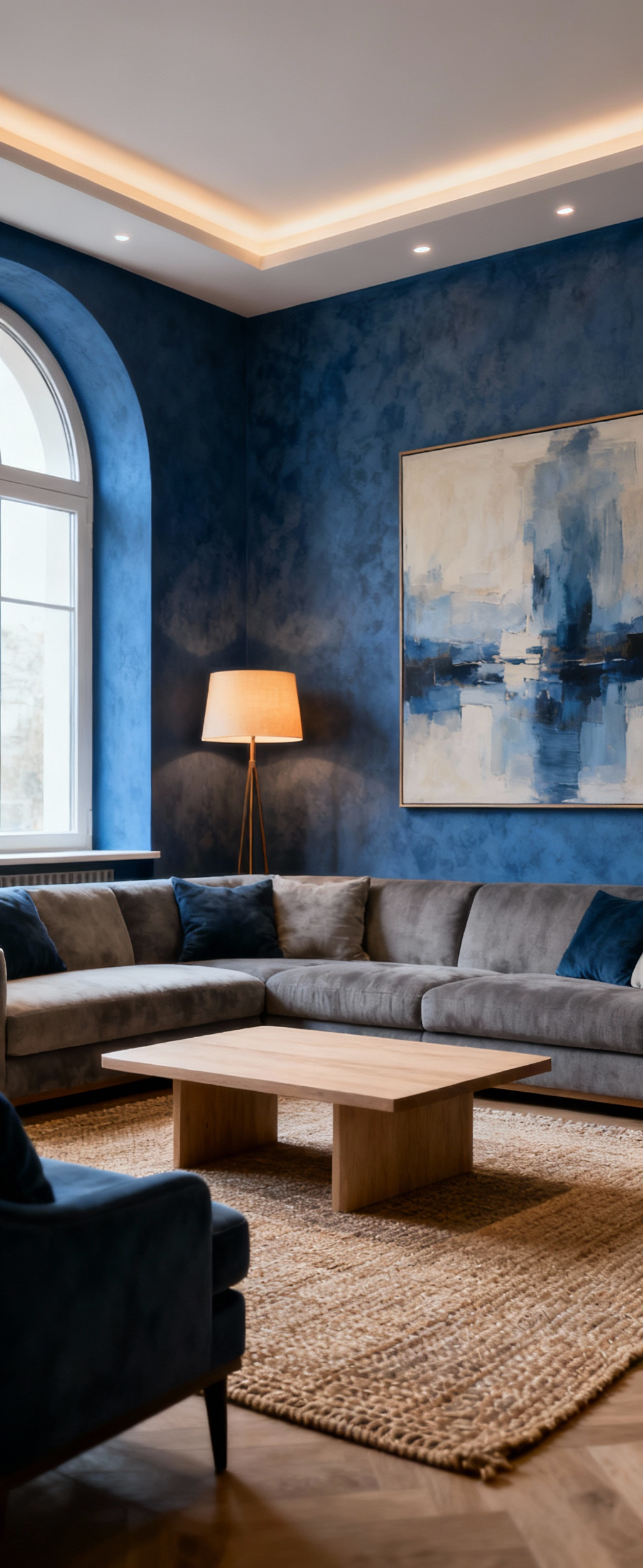
4. Maximizing Perceptual Depth through Gradated Luminescence
Light is the final, and perhaps most powerful, element in our philosophical toolkit. It sculpts space, dictates mood, and can completely transform the feel of a room. We’re not just talking about flipping a switch; we’re talking about painting with light, using its gradations to create dimensionality and an emotional narrative. The technical term for this is chiaroscuro—the strategic interplay of light and shadow.
A uniformly bright room feels flat and uninspired. Instead, layer your light. Use uplighting to cast dramatic shadows behind a large plant or across a textured wall, creating an illusion of height and depth. Use low-level table lamps with warm, diffused light to carve out intimate, cozy nooks for conversation. Dimmers on every single light source are non-negotiable. They give you the power to shift the room’s entire mood, from bright and functional for a morning coffee to a soft, enveloping glow in the evening. This careful orchestration of luminescence is what gives a room its soul.
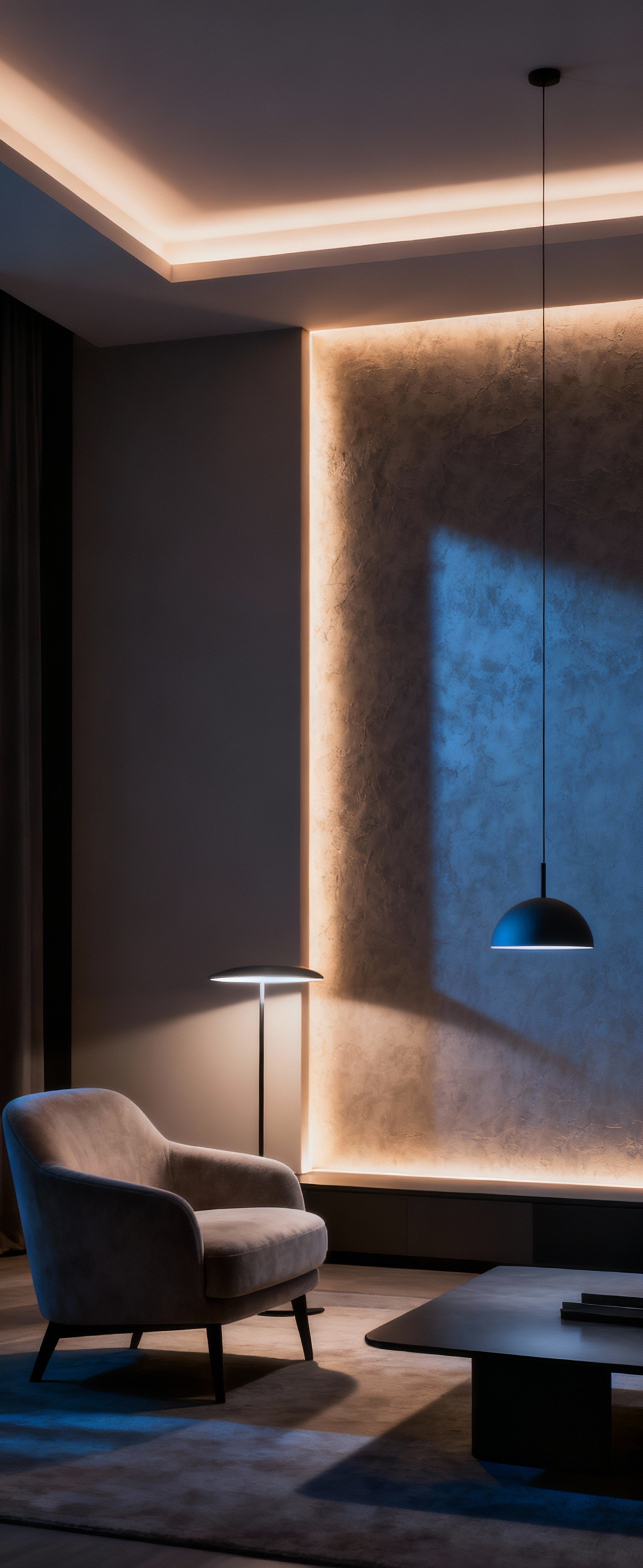
The Philosophical Anchor: Decoding Emotional Ecology & Colorimetric Harmony (Part 2)
Building on our understanding of a room’s emotional core, we now turn to our innate human connection to the natural world. This isn’t just about adding a few plants; it’s about a deep, deliberate integration of nature—a principle known as biophilia—that transforms a living space into a truly restorative sanctuary.
5. Cultivating Biophilic Affinity through Deliberate Natural Integrations
Our innate need to connect with nature, or biophilia, is a powerful psychological force. Integrating this into your living room is about designing an ecosystem that feels restorative and alive. It’s a core principle that informs every choice that follows, bridging the philosophical with the tangible.
Start with natural light. Treat it as the most precious element in the room. Maximize it with unobstructed windows and use surfaces that reflect it rather than absorb it. But biophilia goes deeper. It’s in the feel of unpolished timber, the cool weight of natural stone, and the subtle texture of linen and wool. In my professional experience, spaces that rely on these authentic materials offer a grounding quality that synthetic alternatives simply cannot mimic. A live-edge wood coffee table, a hand-knotted wool rug—these pieces tell a story of their origin and bring a piece of the earth inside. They are not perfect, and in that imperfection lies their profound beauty.
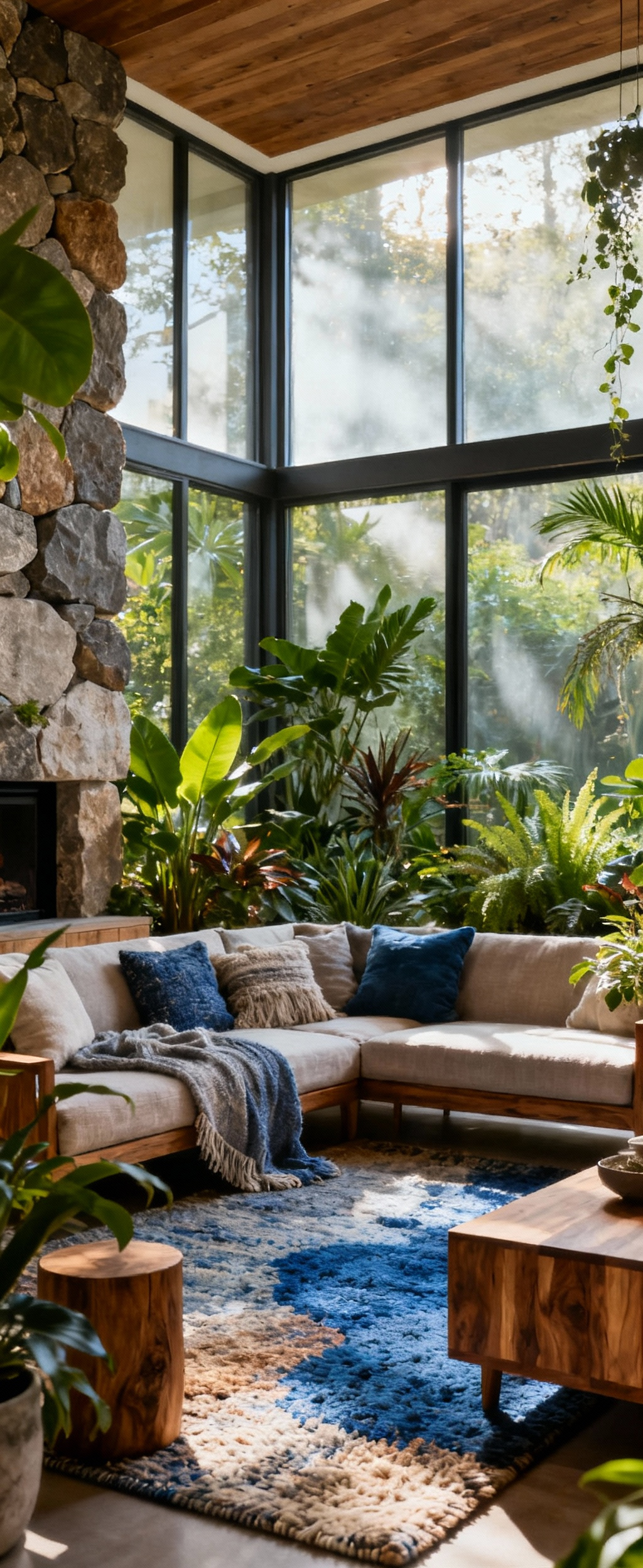
Material Exploration: Curating Tactile Narratives & Aesthetic Authenticity (Part 1)
With our philosophy in place, we can begin exploring the materials that bring it to life. A living room’s essence is found not just in how it looks, but in the nuanced dialogue between its surfaces. This is where we learn to curate tactile stories and build an atmosphere of authenticity.
6. Elevating Aural Serenity through Purposeful Acoustic Material Selections
We often forget that we experience a room with our ears. A space with excessive echo can induce a low-grade, persistent stress, while a room with soft acoustics feels like a sanctuary. I’ve noticed that clients often can’t pinpoint why a certain room feels so calm; frequently, it’s the intentional management of sound.
This begins with selecting materials that absorb or diffuse sound. Think of a thick wool rug that not only anchors a conversation area visually but also acoustically, softening footfalls and voices. Upholstery in plush fabrics like velvet or chenille literally soaks up sound waves. And floor-to-ceiling drapery in a heavy, insulated fabric does double duty, blocking outside noise while preventing internal echo. This is designing for the silent sense, crafting a space where music sounds richer, conversations are clearer, and quiet moments are truly quiet.
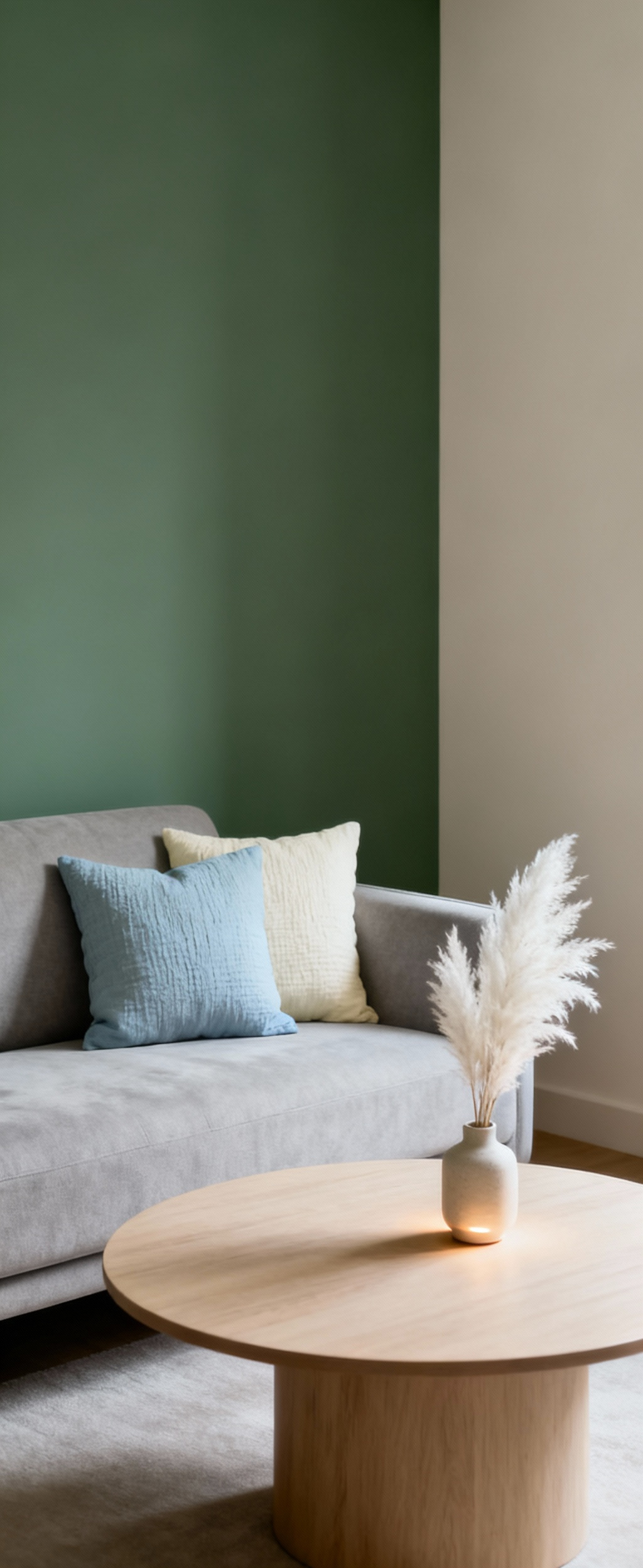
7. Articulating Spatial Richness with Multi-Layered Textile Architectures
Textiles are the narrative layer of a room. They communicate warmth, intimacy, and comfort more directly than almost any other element. Here’s what’s interesting: you can think of them as architectural elements. They don’t just decorate; they build spatial richness.
The art is in the layering of different textures. Imagine a sofa in a durable, sophisticated linen weave, made inviting with a ridiculously soft cashmere throw. Add accent pillows in varying textures—perhaps a structured geometric weave next to a deep, plush velvet. The area rug, the anchor for so many living room ideas, provides the foundational texture. Together, these layers create a palpable sense of curated comfort. You’re crafting vignettes that invite touch and engagement, transforming flat surfaces into a rich, haptic landscape.
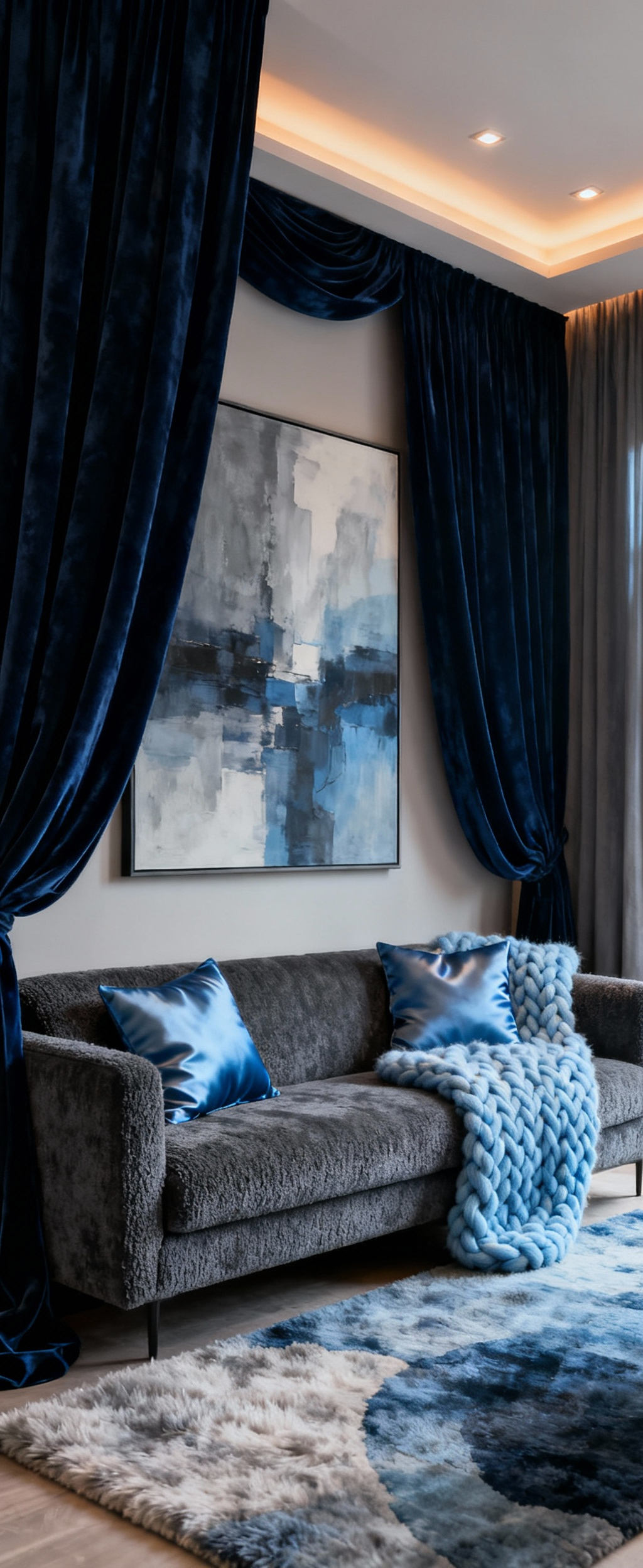
8. Harnessing the Organic Eloquence of Unadorned Woods and Stones
There is a quiet strength and timelessness that comes from using materials in their most honest state. A respect for the earth’s own artistry—the deep grain of walnut, the cool veins of marble—connects us to something enduring. These materials bring a sense of gravity and authenticity that grounds a space.
Look for pieces that celebrate their natural character, where slight imperfections are treated as virtues. A live-edge wooden coffee table becomes a piece of sculpture, its organic form a beautiful contrast to structured seating. A fireplace surround of rough-hewn stone or a console of solid, unadorned oak anchors the room with a sense of permanence. Light washing over these surfaces highlights their textures and natural patterns, creating a dynamic visual that changes throughout the day. It’s a design choice for those who seek enduring quality over fleeting trends.
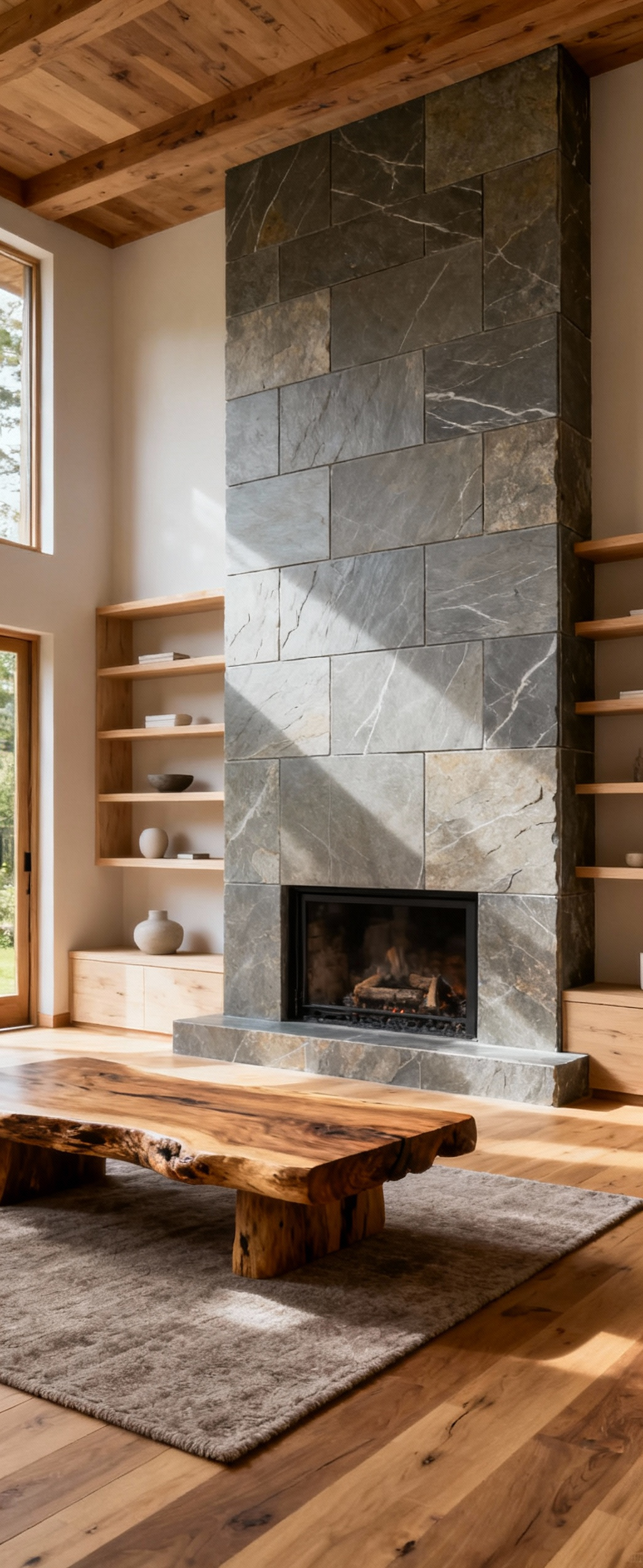
9. Infusing Dynamic Allure through Reflective and Translucent Surface Interplay
Light is an active force, and you can manipulate it to bring a room to life. Using surfaces that reflect, refract, or diffuse light is the key to creating a space that feels dynamic and vibrant. This is about making a room feel alive, not static.
A large mirror placed opposite a window is a classic trick for a reason—it effectively doubles your natural light and perceived space. But think beyond mirrors. Polished metals like brass or brushed steel on hardware and accents act as jewelry for the room, catching and scattering light. Glass in its many forms—fluted, etched, or smoked—adds a delicate balance of transparency and texture. These reflective touches prevent stagnation, enliven dark corners, and add a layer of curated sophistication. The subtle dance of light across these surfaces creates a welcoming, expansive atmosphere.
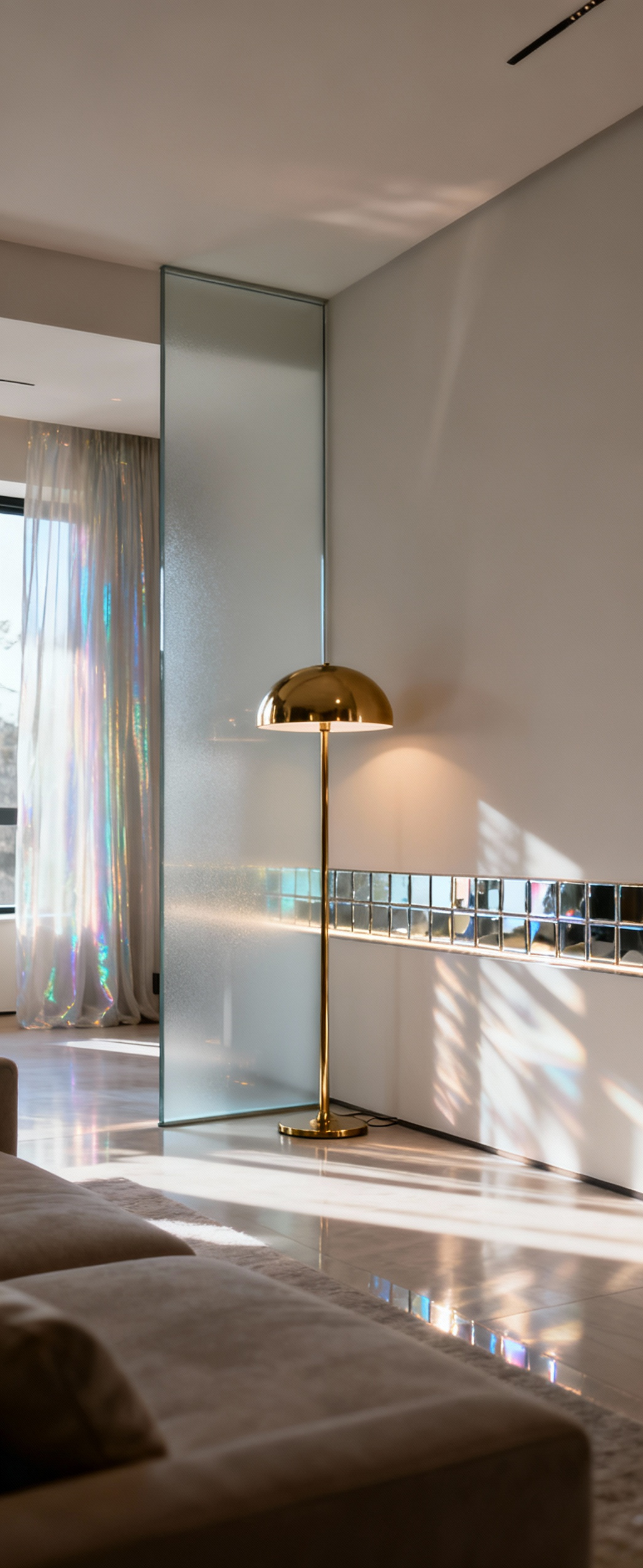
Material Exploration: Curating Tactile Narratives & Aesthetic Authenticity (Part 2)
As we delve deeper, we move from foundational materials to those with an evolving story. This is about embracing finishes that don’t just exist in a space, but live and age with you, gaining character and a profound sense of authenticity over time. This is where a house truly starts to feel like a home.
10. Mastering the Patina Principle for Authentically Timeless Aesthetics
The “patina principle” is a conscious rejection of the new and sterile. Patina is the beautiful transformation materials undergo with time and use—the subtle sheen on aged wood, the softening of full-grain leather. It is a visible testament to a life lived, a story that cannot be faked. This philosophy creates a timeless aesthetic rooted in warmth, history, and genuine connection.
To do this well, you must choose materials that age gracefully. Unlacquered brass, which moves from a bright shine to a sophisticated, muted glow. Natural wood that deepens in color over decades. A vintage leather chesterfield, whose surface maps the contours of daily life. These are investments in a layered aesthetic that celebrates passage, not perfection. This mindset is a powerful lifestyle integration; it signifies a preference for spaces that feel truly lived-in. A room designed with patina becomes a sanctuary of storied beauty.
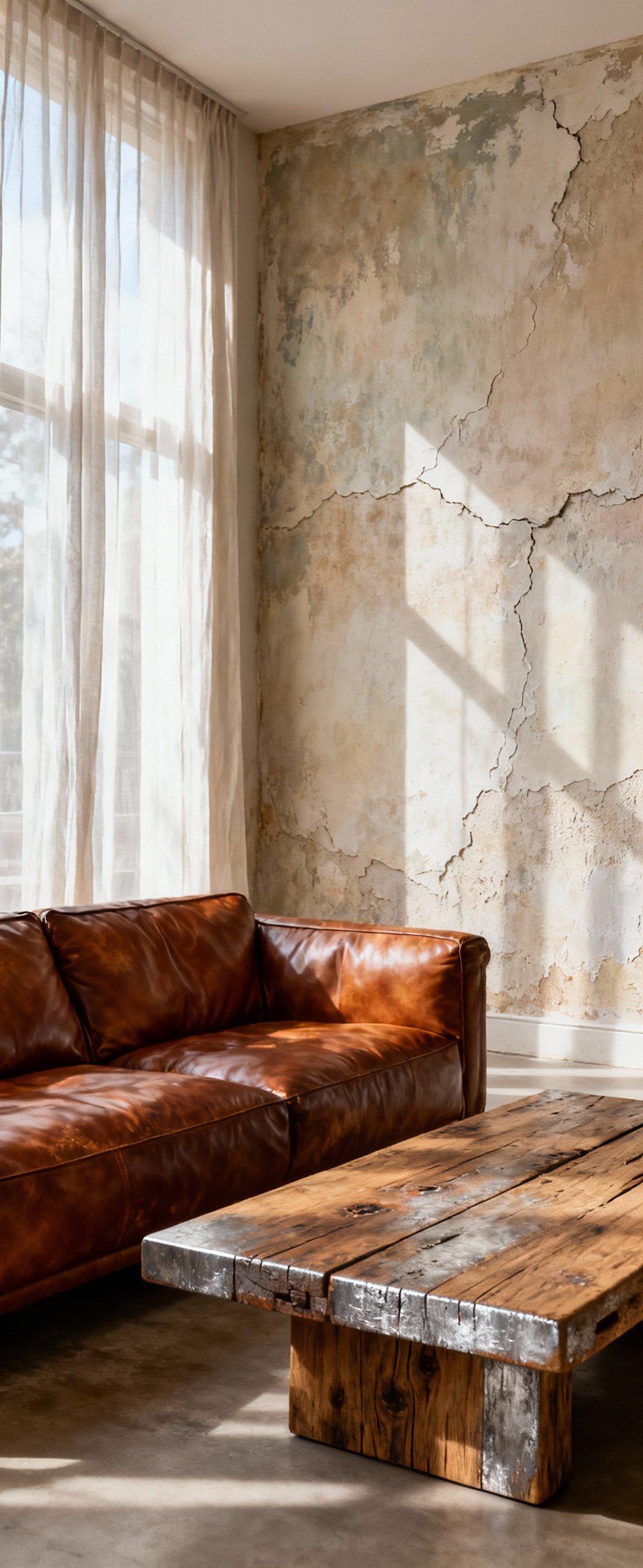
Spatial Application: Engineering Harmonious Form & Dynamic Flow (Part 1)
Now that we understand the philosophy and materials, we can apply them to the physical space. This is the art of arrangement, of engineering an environment for both beauty and effortless function. These are the principles that transform a room into a vibrant ecosystem for living.
11. Orchestrating Conversational Ecosystems with Proxemics-Driven Furniture Groupings
A living room is, fundamentally, a stage for human connection. I approach every layout first by thinking about proxemics—the study of how personal space dictates comfort and interaction. Furniture groupings are psychological constructs. For deep, intimate conversation, arrange seating within a 4-7 foot radius to create a sense of enclosure and encourage eye contact. For larger gatherings, create smaller, distinct seating zones to allow multiple conversations to happen at once.
The goal is to create ‘conversational ecosystems.’ Every piece should contribute to this, from the main sofa to an accent chair. It’s crucial to maintain clear, inviting pathways. There is nothing worse than a beautiful room that’s awkward to move through. A well-placed chaise or a pair of swivel chairs can guide flow while offering flexibility. This is about facilitating connection, not dictating it, creating living room designs that feel organic and responsive.
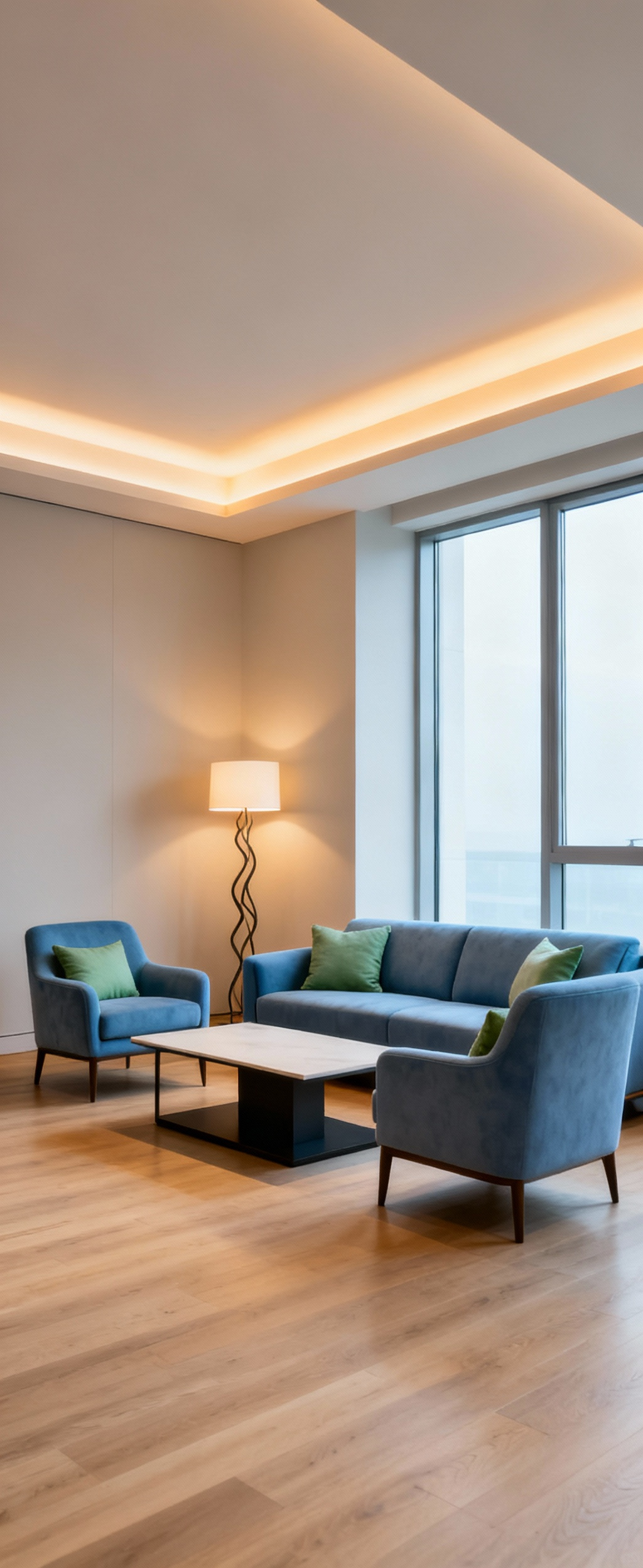
12. Delineating Zonal Intentions through Deliberate Architectural Interventions
In an open-plan space, a lack of clear boundaries can make a room feel chaotic and undefined. You have to create zones with intention. But this doesn’t mean building walls. You can use sophisticated ‘soft’ partitions to delineate function and create psychological boundaries.
An open-backed bookcase is a perfect example—it divides a space and provides storage without blocking light. A large area rug is one of the most powerful tools for anchoring a zone, clearly defining a conversation area or reading nook. Subtle changes in flooring material or even ceiling height can communicate a shift in function. Lighting design is also key: a dramatic pendant over a dining area versus soft floor lamps in a lounge zone. These deliberate interventions give each part of your living space a clear purpose.
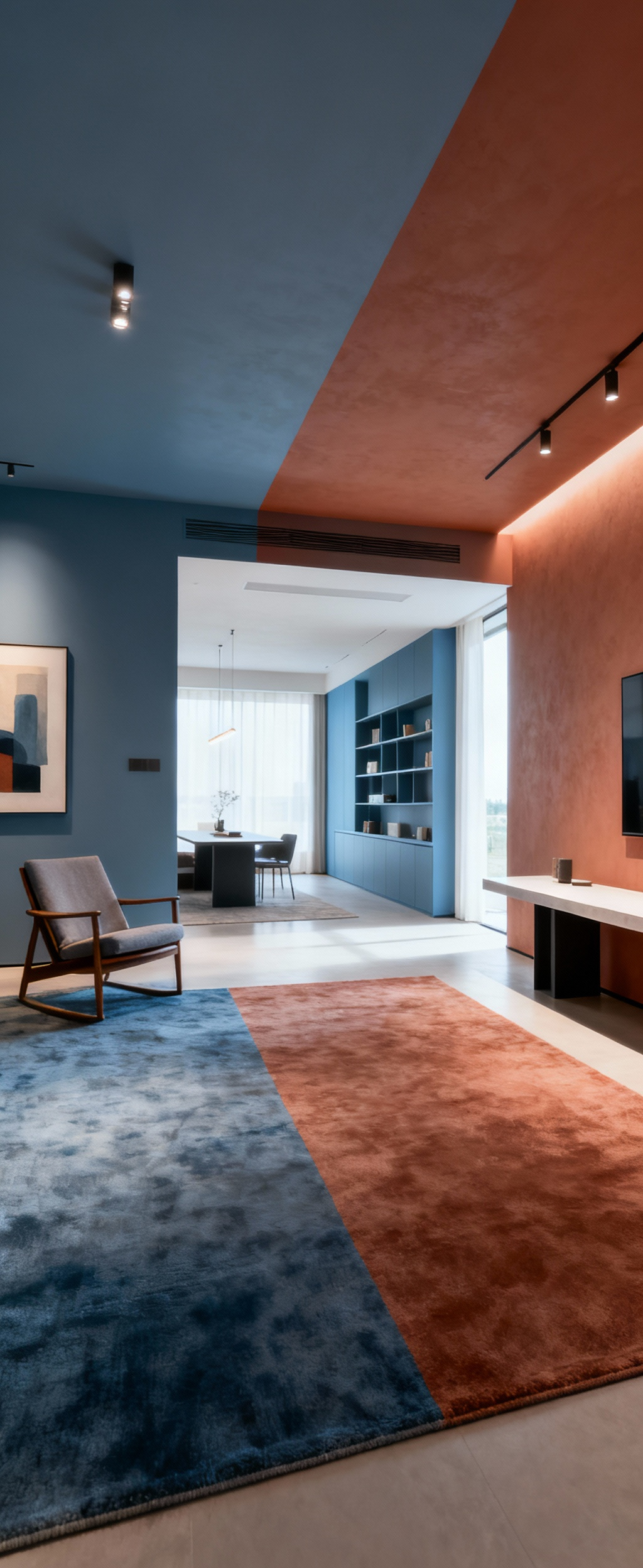
13. Establishing Visual Gravitas with Articulated Focal Point Emphases
Every room needs a visual anchor. A focal point is what immediately captures attention and grounds the eye, allowing everything else to fall into place around it. It gives a room a sense of purpose and composure. Without one, a space can feel visually scattered.
A majestic fireplace is a traditional choice, but in contemporary design, it could be a massive piece of art, a wall of books, or a large window with a breathtaking view. If your room doesn’t have a natural architectural focal point, you must create one. I’ve learned this is essential for indecisive decorators; once the focal point is set, other decisions become much easier. It could be a textured feature wall or a sculptural light fixture. The primary seating should then orient itself toward this anchor, creating a harmonious visual hierarchy.
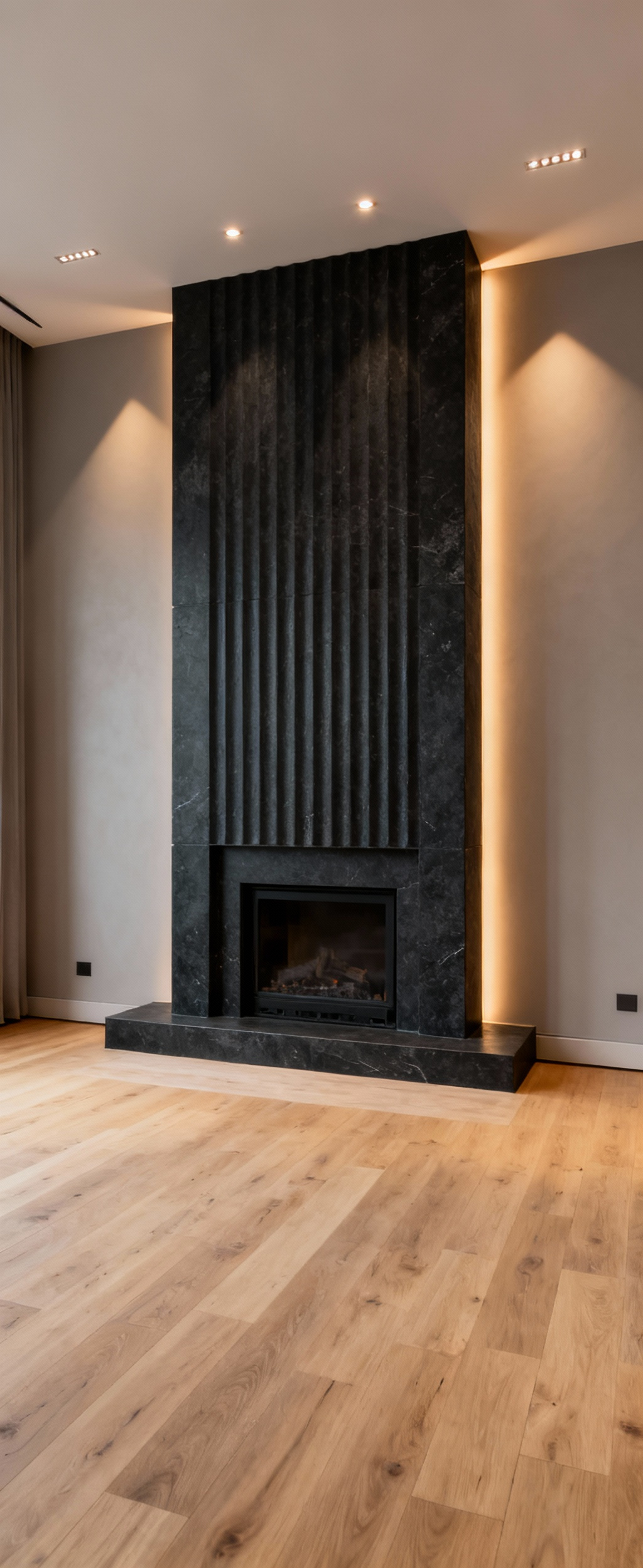
14. Optimizing Perceived Expanse via Intelligent Negative Space Integration
Stay with me here, because this is one of the most misunderstood concepts in design. Negative space isn’t empty space; it’s the quiet, intentional space around objects. It’s the visual pause that allows the important elements to breathe. It is the single most important factor in making a room feel calm and expansive, not cluttered.
Resist the urge to fill every surface. An empty wall can be more powerful than a crowded one, giving visual respite and emphasizing a single piece of art. Leaving tabletops mostly clear fosters a sense of order. Scale is also critical. Over-sized furniture will suffocate a small room, eliminating vital negative space. This disciplined approach is a hallmark of sophisticated design. It creates a feeling of liberation, clarity, and intentional calm that profoundly enriches the living experience.
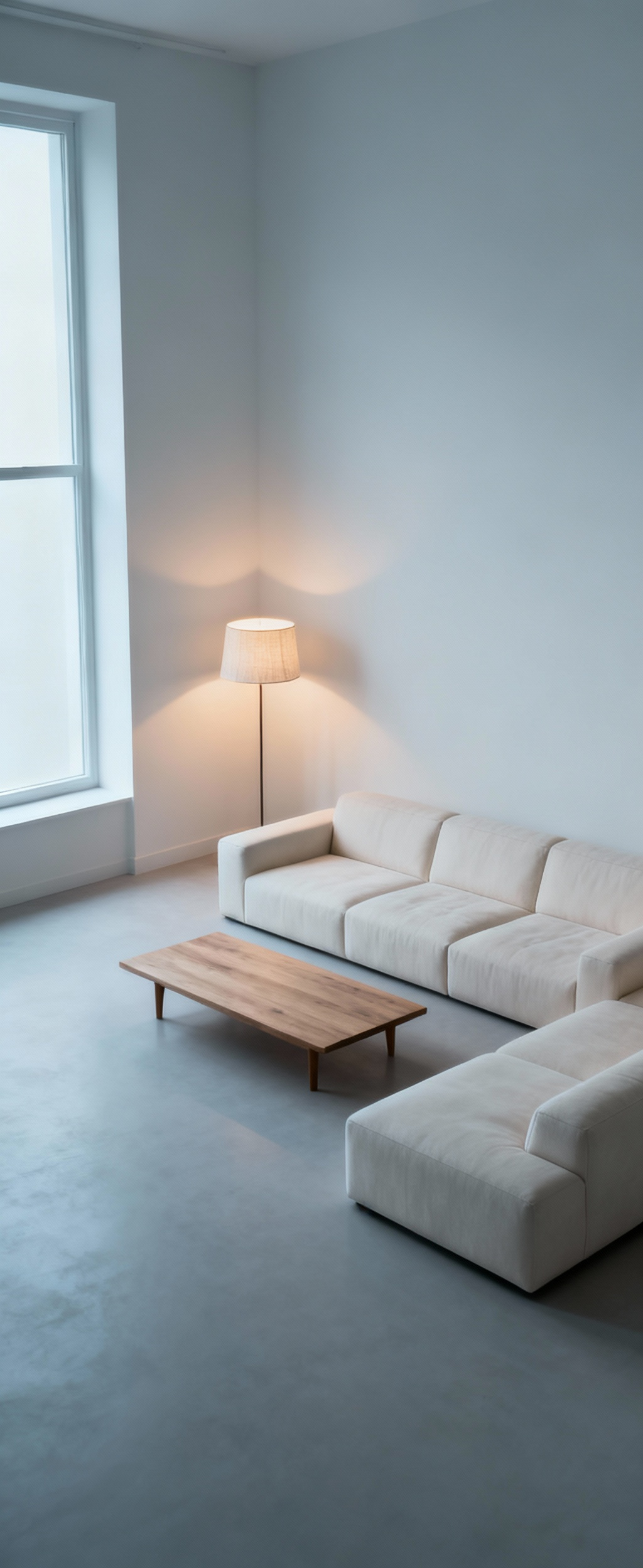
Spatial Application: Engineering Harmonious Form & Dynamic Flow (Part 2)
Having engineered the zones and focal points, we now turn to the subtle choreography of life within the space. This is about how we move through a room—physically and visually—and how thoughtful design can make that journey feel effortless and graceful.
15. Curating Fluid Transitional Modalities for Uninterrupted Movement Narratives
The best living rooms feel good to move through. An “uninterrupted movement narrative” means your path through the space—from the door to the sofa, from the sofa to the window—feels intuitive and unburdened. This is about the intelligent design of the spaces between the objects.
This is realized through the strategic placement of furniture to guide traffic in gentle curves rather than abrupt turns. You can also create visual pathways, where a repeating color or texture draws your eye smoothly from one zone to another. A large area rug, for instance, can anchor a seating area while its edge implicitly defines the main circulation path around it. This kinetic approach engineers an environment where every transition feels less like navigating an obstacle course and more like an inviting, unfolding journey.
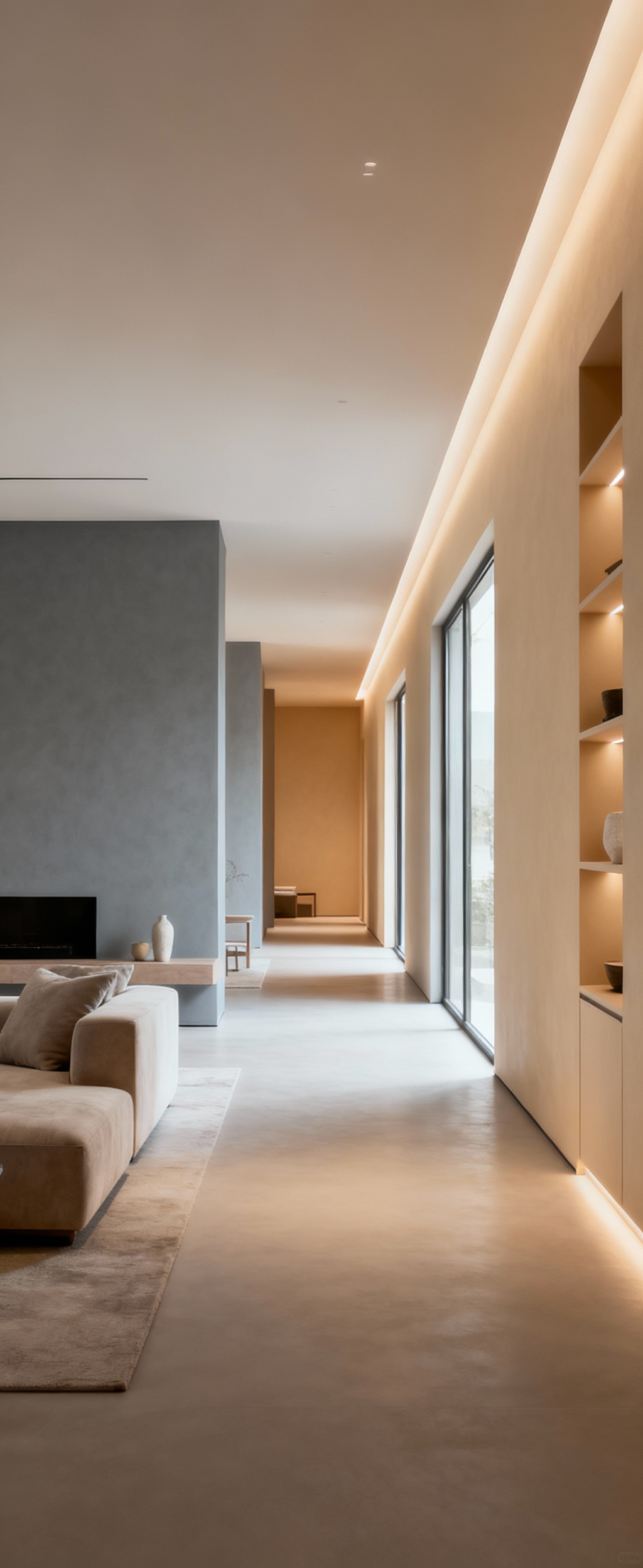
Lifestyle Integration: Cultivating Enduring Narratives & Personalized Well-being (Part 1)
Now we reach the pinnacle: integrating all these principles into a cohesive whole that actively supports your life. This is where your living room transcends being a collection of objects and becomes a dynamic canvas for your story, values, and well-being.
16. Future-Proofing Architectural Empathy with Adaptable and Modular Furniture Systems
Our lives are not static, and our homes shouldn’t be either. Designing with “architectural empathy” means creating a space that can evolve with you. This is why I am such a proponent of high-quality, adaptable modular furniture. These systems allow your living room to transform from an entertainment zone to a quiet workspace to a guest room without a major overhaul.
This is about investing in freedom. Systems with clever, reconfigurable elements liberate you from rigid layouts and foster a creative relationship with your space. The design allows the home to consistently mirror your internal state and current needs. It’s a profound lifestyle integration that empowers you with a sense of agency over your own environment, ensuring your living room serves you well for years to come.
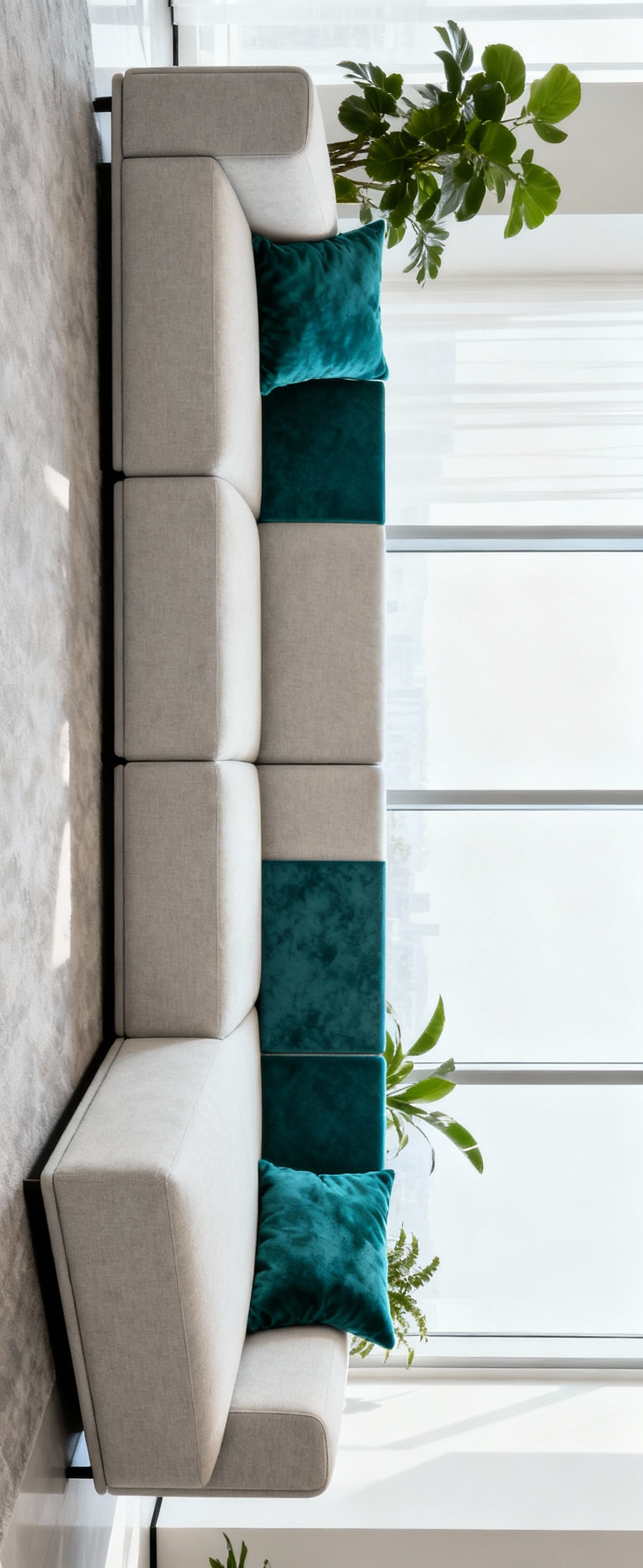
17. Weaving Autobiographical Tapestries through Curated Collections and Articulations
Your home should be a repository of your personal history. It should tell your story. This is about elevating cherished objects—heirlooms, art found on a meaningful trip, handmade crafts—from clutter into a curated, autobiographical tapestry. This is where authenticity lives.
Thoughtful presentation is everything. Custom framing, integrated niches, and subtle display lighting can transform these items into treasured artifacts. Spatially, this is about creating moments for pause and reflection, not overwhelming the senses. By doing this, your living room becomes a dynamic dialogue between your past and present. It cultivates a daily affirmation of your unique identity, fostering a profound sense of belonging.
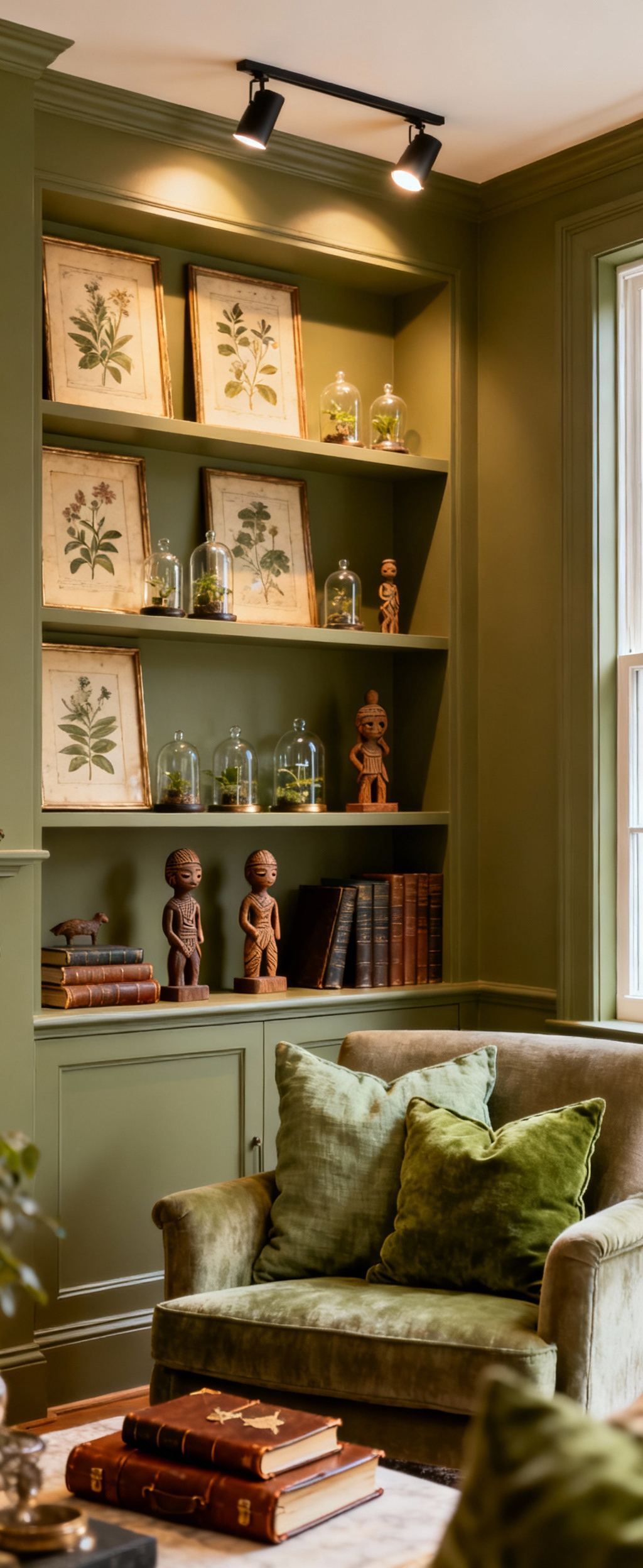
18. Implementing Sophisticated Biometric-Responsive Ambient Controls
This may sound futuristic, but it’s where elevated design is headed. Think of your home as a sentient extension of yourself, an environment that proactively supports your well-being. This is about integrating discreet smart-home technology that can optimize the room’s conditions without your conscious input.
Imagine lighting that subtly shifts its color temperature throughout the day to support your natural circadian rhythm, or an air quality system that silently purifies the air when it detects impurities. In my professional experience, the most impactful technologies are the ones you never notice. They work in the background to reduce your cognitive load and create a perpetual state of effortless comfort. The living room becomes a truly restorative sanctuary that intelligently adapts to your biological rhythms.
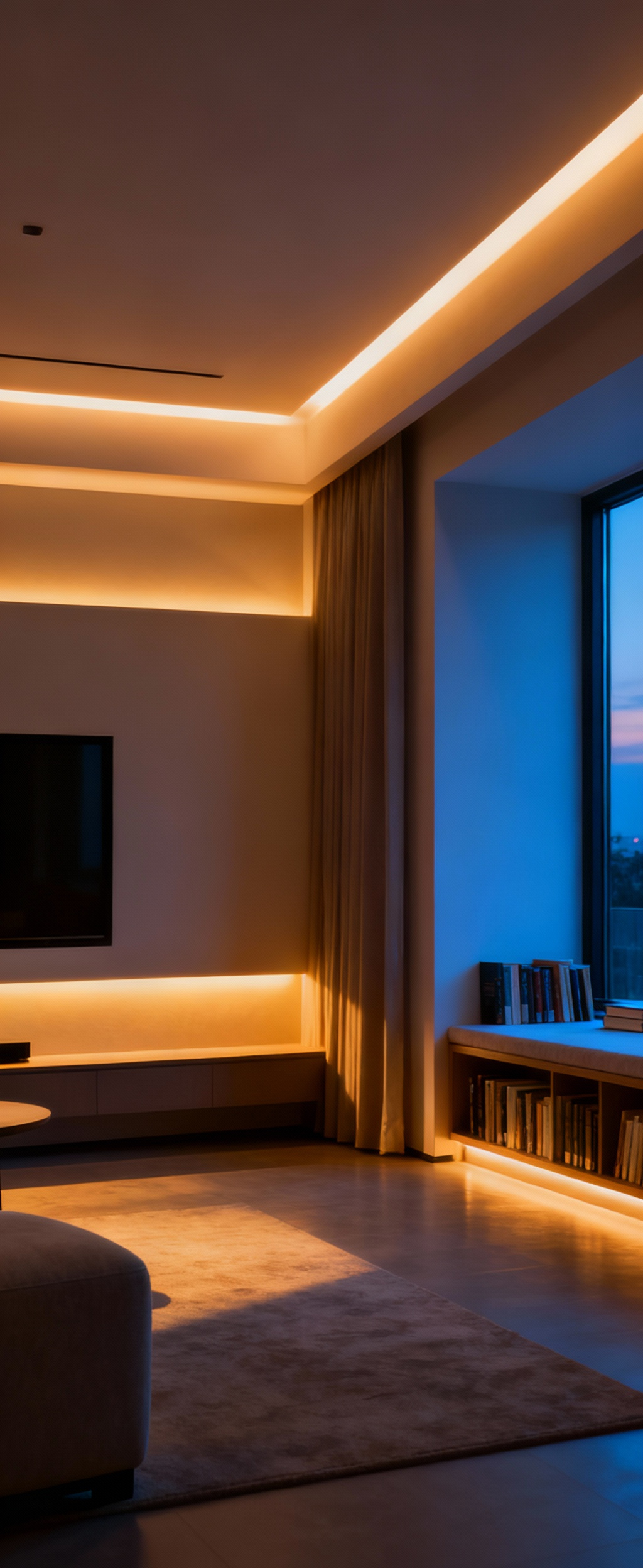
19. Fostering Mindful Engagement via Decluttered and Contemplative Vistas
In our constantly over-stimulated world, the greatest luxury is often quietude. Crafting a space for mindful engagement means deliberately reducing sensory overload to invite contemplation and presence. This elevates negative space and the power of absence.
This means ruthless editing. It means integrated storage to hide the clutter of daily life. It emphasizes natural, tactile materials that feel grounding and authentic. Spatially, this is about creating clear sightlines and a single, powerful focal point—perhaps nothing more than a window with a view of a tree. This intentional creation of contemplative vistas gives your mind whitespace, encouraging you to pause and reflect. Your living room becomes a powerful ally in your journey toward a more mindful way of being.
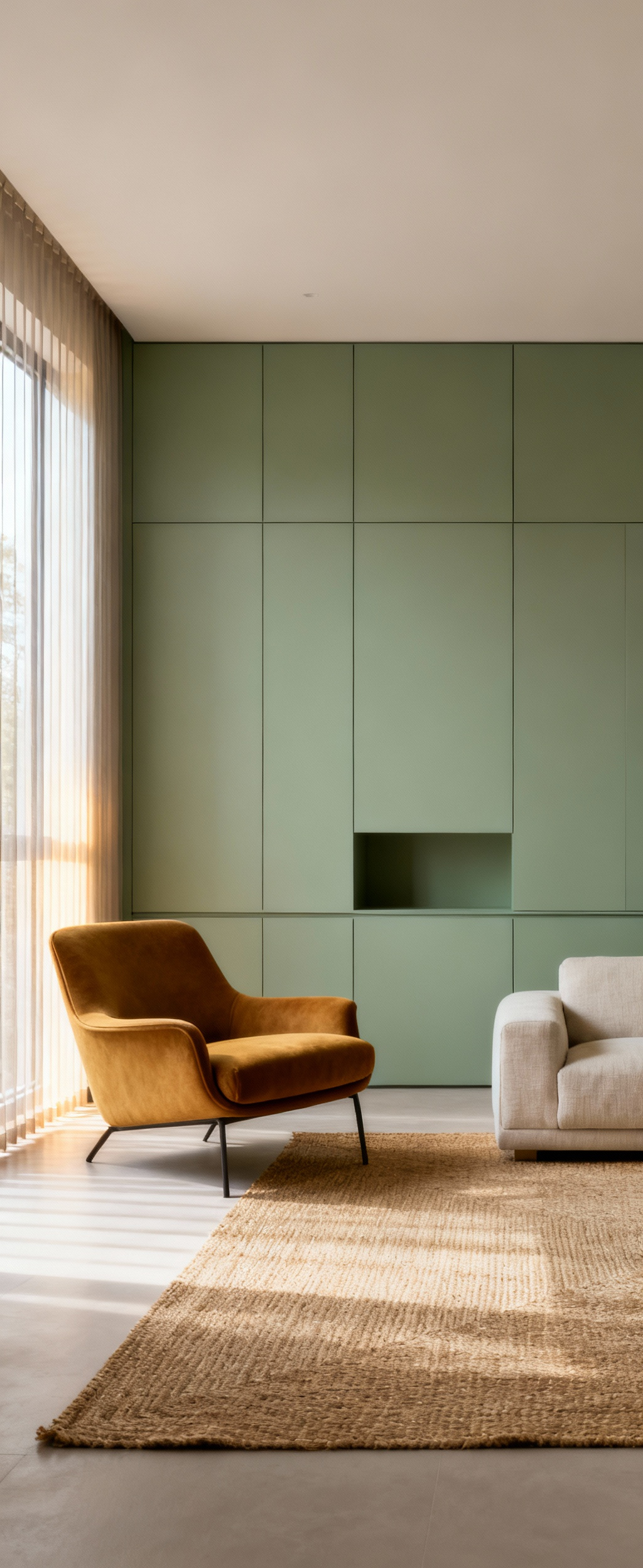
Lifestyle Integration: Cultivating Enduring Narratives & Personalized Well-being (Part 2)
Finally, we arrive at the profound intersection of design, personal values, and planetary well-being. This is where we commit to choices that not only look and feel good, but do good, transforming the living room into a sanctuary of enduring impact.
20. Embedding Sustainable Praxis through Conscientious Sourcing and Longevity-Oriented Design
True sophistication in design is inseparable from ethical responsibility. A commitment to sustainability is not a trend; it’s a foundational principle that imbues your home with integrity. This is about looking critically at the origins of every element you bring into your home and choosing things made to last for generations.
This means prioritizing authentic, high-quality materials: solid wood from responsibly managed forests, hand-forged metals, organic textiles. I learned early on in my paint consultation career that even the choice of non-toxic, VOC-free paints makes a silent but powerful statement about valuing health and well-being. By commissioning work from local artisans or investing in heirloom-quality pieces, you reject the culture of disposability. For anyone seeking truly resonant living room ideas, this is the ultimate integration. A home built on these principles fosters a more mindful existence, aligning your personal sanctuary with a deeper sense of purpose and a commitment to a resilient future.
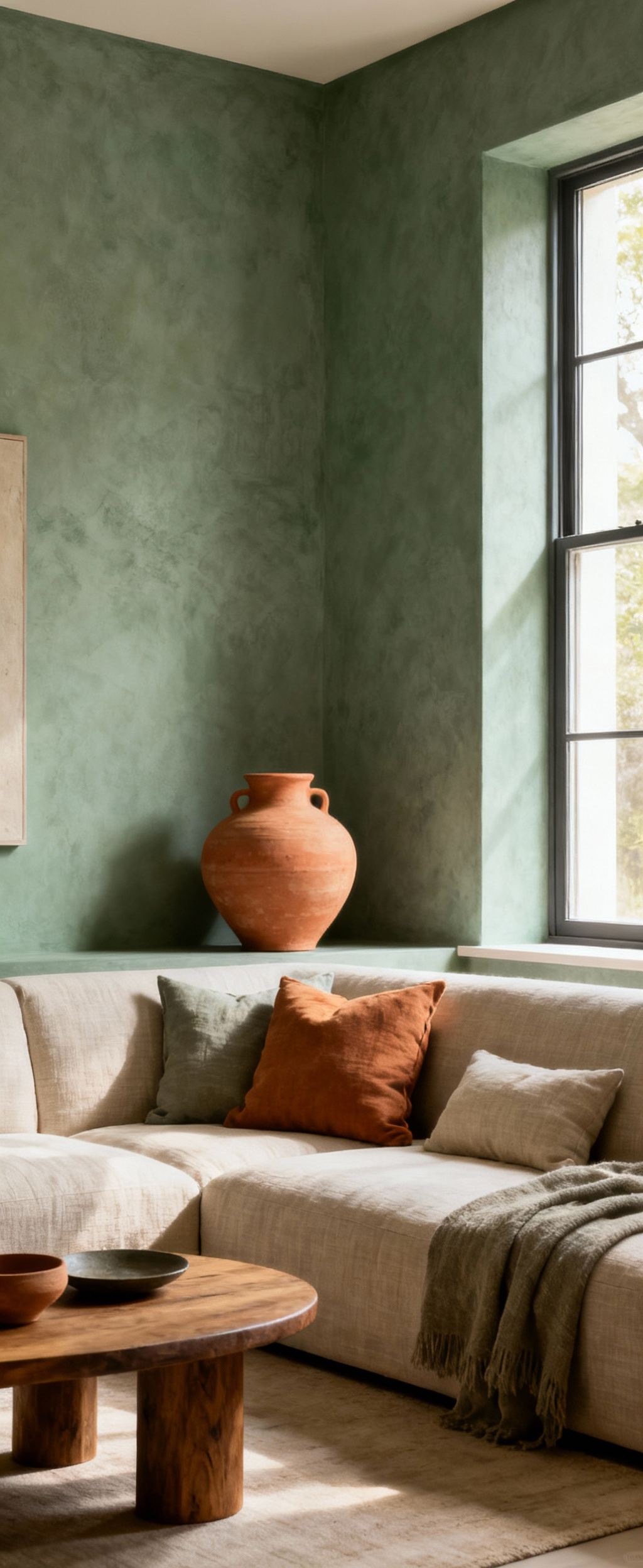
Conclusion
We’ve journeyed through these 20 ideas, and I hope one truth has become clear: a living room is far more than a collection of things. It is an intentional landscape for your life, a sanctuary you architect for your soul. True design sophistication isn’t about following trends, but about thoughtfully orchestrating every detail—color, light, texture, and flow—so that each element serves the higher purpose of your well-being.
You now have a framework for creating a space that fosters calm, inspires creativity, and deepens connection. I invite you to see your next design choice not as a task, but as an act of self-authorship. Be the curator of your own story. Trust your discernment, and craft a living room that doesn’t just look exceptional, but one that profoundly feels like home, radiating an energy that sustains and elevates you every single day.
